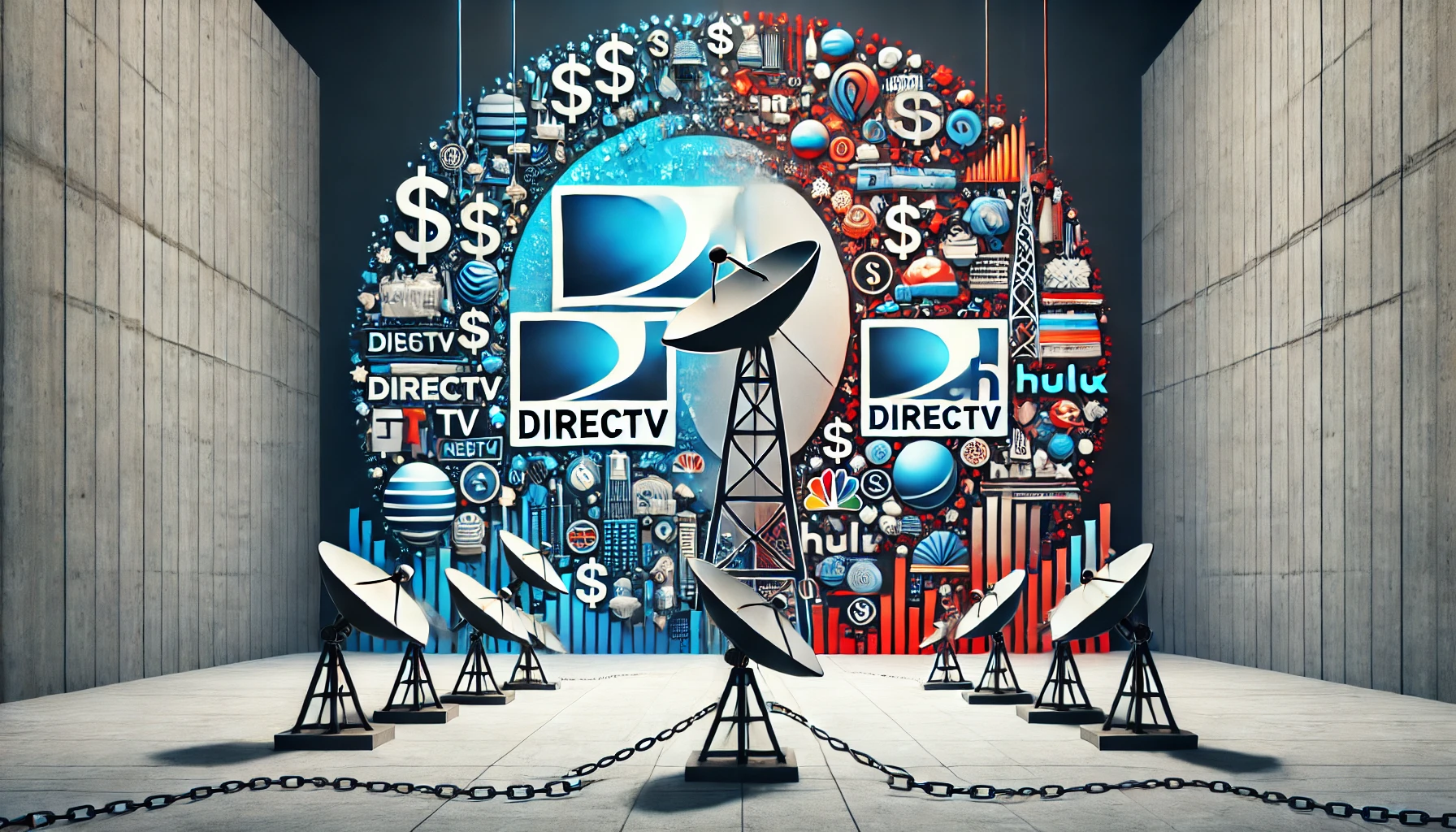Inside the DirecTV-Dish Merger: How Debt and $1.6 Billion Losses Are Shaping the Deal
The proposed merger between DirecTV and Dish Network has sent ripples through the pay-TV industry, marking one of the most significant deals in the sector in recent years. The combination of two satellite television giants—DirecTV and Dish—aims to create a more competitive force against streaming services like Netflix and Hulu. However, the financial landscape of the merger is anything but straightforward. A $1.6 billion debt objection from bondholders and the massive debt burden both companies carry raise critical questions about the viability of the deal.
This blog delves into the financial aspects of the DirecTV-Dish merger, focusing on the challenges posed by DirecTV debt takeover, Dish Network debt issues, and the concerns raised by creditors. We’ll also look at how this merger reflects the broader pay-TV merger challenges and what it means for the future of the industry.
DirecTV Dish Merger: A Closer Look at the $9.75 Billion Debt Takeover
The DirecTV Dish merger was officially announced with much fanfare, but there’s more than meets the eye. While DirecTV will technically acquire Dish Network for a symbolic $1, the real cost lies in the DirecTV debt takeover of nearly $9.75 billion in liabilities(Fast Company)(Fox Business). Dish Network has been grappling with declining subscribers due to the cord-cutting phenomenon, where traditional TV viewers migrate to streaming services.
Both companies have lost substantial market share as more people opt for on-demand services, and this debt takeover is a strategic move to consolidate their assets in hopes of becoming more competitive. However, this decision raises concerns about whether the merger can survive with such a high debt load.
Why is Dish Network Facing Debt Issues?
Dish Network debt issues stem largely from the company’s declining subscriber base and mounting operational costs. Over the past decade, Dish has struggled to retain customers as streaming services have become more popular, making its satellite service less attractive to modern consumers. As of 2024, Dish has reported a 63% loss in its satellite TV customers since 2016(Fast Company).
To stay afloat, Dish has turned to borrowing, leading to its significant debt burden. With this merger, DirecTV assumes Dish’s debts, including the $1.6 billion debt objection from bondholders, further complicating the merger’s financial outlook. The question remains: can the new combined entity shoulder this burden and still offer competitive pricing and services?
The $1.6 Billion Debt Objection: Why Bondholders Are Concerned
At the heart of the merger’s financial troubles is a $1.6 billion debt objection raised by Dish Network’s bondholders. These bondholders are objecting to the terms of the merger, citing concerns about the impact on their investments. The objection is significant because if it isn’t resolved, it could delay or even derail the entire merger(Fox Business).
The DirecTV merger objections from bondholders highlight a larger issue: can the new company generate enough revenue to service its debt while still competing against lower-cost streaming services? Bondholders are skeptical, and their objections add a layer of uncertainty to a merger already fraught with financial risks.
What Are Bondholders Objecting To?
Bondholders are concerned that the merger will dilute their claims and potentially lead to losses if the new company is unable to meet its financial obligations. With DirecTV taking on Dish’s debt, bondholders worry that the company won’t have the flexibility to offer competitive pricing or make the necessary investments in infrastructure and technology(Fast Company).
Additionally, bondholders argue that the merger places them in a vulnerable position, particularly if the new entity fails to thrive in the competitive pay-TV landscape. The Dish Network creditor dispute is a key obstacle the companies must overcome before the merger can proceed.
Pay-TV Merger Challenges: DirecTV and Dish Fight for Relevance
The Satellite TV merger between DirecTV and Dish Network highlights the broader pay-TV merger challenges faced by traditional television providers. Over the past decade, the rise of streaming services has completely transformed the entertainment industry. Consumers now prefer the flexibility and convenience of on-demand streaming over traditional pay-TV packages. This shift has left companies like DirecTV and Dish struggling to remain relevant.
How Cord-Cutting and Streaming Services Are Reshaping the Industry
Cord-cutting is one of the biggest challenges that DirecTV and Dish face as they attempt to merge. Since 2010, millions of American households have abandoned satellite and cable services in favor of streaming platforms like Netflix, Hulu, and Disney+(Fox Business). These services offer more affordable, flexible, and user-friendly options, making it difficult for traditional pay-TV companies to compete.
DirecTV and Dish hope that by combining forces, they can reduce operational costs and offer more competitive pricing. But even with DirecTV debt restructuring, the road ahead is uncertain. The new company will still have to contend with declining subscribers and the growing dominance of streaming services. Can a Satellite TV merger really change the game for two companies that are both on the decline?
DirecTV Debt Restructuring: A Necessary Move for the Future
As part of the merger, DirecTV is undergoing debt restructuring to manage its significant financial obligations. By restructuring its debt, DirecTV aims to reduce interest payments, extend repayment periods, and free up cash flow to invest in the new company’s growth. But DirecTV debt restructuring is not a silver bullet. The company will still need to find ways to attract new customers and retain its existing base(Fox Business).
Will the DirecTV-Dish Merger Benefit Consumers?
One of the potential benefits of the merger is that it could lead to more affordable pay-TV options for consumers. The new company hopes to leverage its larger scale to negotiate better deals with content providers and offer smaller, more affordable packages. This would allow DirecTV and Dish to mimic some of the advantages offered by streaming services, such as lower prices and more flexible packages.
However, the success of this strategy depends on whether the company can manage its debt effectively. If the DirecTV Dish merger leads to improved pricing and better content options, it could potentially attract cord-cutters back to pay-TV. But if the debt burden proves too heavy, consumers might not see any meaningful benefits.
The Future of Pay-TV: What’s Next?
The DirecTV-Dish merger is a bold attempt to save two struggling companies in an industry that is rapidly changing. As the merger progresses, it will be crucial to see how the companies handle their pay-TV merger challenges, particularly with the looming $1.6 billion debt objection from bondholders. If the merger succeeds, it could pave the way for more affordable, competitive pay-TV packages that offer a blend of traditional television and streaming options.
However, if the financial hurdles prove too great, the merger could fail, leaving both companies in an even more precarious position. For now, all eyes are on how the new entity will manage its debt and whether it can adapt to a changing entertainment landscape.



